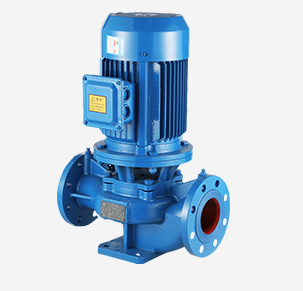Amharic
- Afrikaans
- Albanian
- Amharic
- Arabic
- Armenian
- Azerbaijani
- Basque
- Belarusian
- Bengali
- Bosnian
- Bulgarian
- Catalan
- Cebuano
- Corsican
- Croatian
- Czech
- Danish
- Dutch
- English
- Esperanto
- Estonian
- Finnish
- French
- Frisian
- Galician
- Georgian
- German
- Greek
- Gujarati
- Haitian Creole
- hausa
- hawaiian
- Hebrew
- Hindi
- Miao
- Hungarian
- Icelandic
- igbo
- Indonesian
- irish
- Italian
- Japanese
- Javanese
- Kannada
- kazakh
- Khmer
- Rwandese
- Korean
- Kurdish
- Kyrgyz
- Lao
- Latin
- Latvian
- Lithuanian
- Luxembourgish
- Macedonian
- Malgashi
- Malay
- Malayalam
- Maltese
- Maori
- Marathi
- Mongolian
- Myanmar
- Nepali
- Norwegian
- Norwegian
- Occitan
- Pashto
- Persian
- Polish
- Portuguese
- Punjabi
- Romanian
- Russian
- Samoan
- Scottish Gaelic
- Serbian
- Sesotho
- Shona
- Sindhi
- Sinhala
- Slovak
- Slovenian
- Somali
- Spanish
- Sundanese
- Swahili
- Swedish
- Tagalog
- Tajik
- Tamil
- Tatar
- Telugu
- Thai
- Turkish
- Turkmen
- Ukrainian
- Urdu
- Uighur
- Uzbek
- Vietnamese
- Welsh
- Bantu
- Yiddish
- Yoruba
- Zulu
Telephone: +86 13120555503
Email: frank@cypump.com
መስከ . 22, 2024 03:55 Back to list
sewer ejectors
Understanding Sewer Ejectors Essential Components of Wastewater Management
Sewer ejectors, also known as sewage ejector pumps, play a vital role in wastewater management, especially in areas where gravity drainage is not feasible. These systems are designed to efficiently transport sewage and wastewater from lower elevations to higher ones, ensuring that homes and businesses are properly connected to municipal sewer systems or septic tanks.
What is a Sewer Ejector?
A sewer ejector is a type of submersible pump specifically constructed to lift sewage from below the level of the main sewer line. The pump is typically installed in a basin called a sump pit, which collects waste from toilets, sinks, and other plumbing fixtures not situated at a sufficient elevation to drain by gravity alone. Once the wastewater fills the sump pit to a predetermined level, the ejector pump activates, propelling the waste through a discharge pipe to the sewer line or septic system.
How Does It Work?
The operation of a sewer ejector is relatively straightforward. When wastewater enters the sump pit, it triggers a float switch. This switch signals the pump to start, drawing the sewage into the pump's chamber. Once inside, an impeller spins rapidly, creating a vortex that propels the waste upward through the discharge pipe. Typically, the pressure generated by the pump allows it to push the sewage against the gravitational flow of the main sewer line.
Maintaining the proper function of a sewer ejector pump is crucial for effective wastewater management. Regular inspection and maintenance are essential to ensure that the pumps are free from obstructions and operating efficiently. Common issues can include clogs, worn-out components, or electrical failures, all of which can lead to system backups and potentially costly repairs.
sewer ejectors

Applications of Sewer Ejectors
Sewer ejectors are particularly important in residential basements, where bathroom installations may occur below the level of the main sewer line. They are also used in commercial settings, such as restaurants and hotels, where wastewater from lower levels must be effectively managed. Additionally, sewer ejectors are beneficial in industrial applications where waste needs to be transported to a central treatment facility.
Benefits of Sewer Ejectors
The primary advantage of a sewer ejector system is its ability to overcome gravity. This capability allows for more flexible plumbing layouts in homes and businesses, enabling the installation of bathrooms or washing facilities in basements or lower levels. Sewer ejectors also help prevent sewage backflow, which can pose serious health risks and result in damage to property.
Moreover, modern sewer ejectors are designed to be energy-efficient, ensuring minimal operational costs while providing reliable performance. Many are equipped with advanced features, such as alarm systems that alert homeowners to potential problems before they escalate.
Conclusion
In summary, sewer ejectors are critical components of modern wastewater management systems. By facilitating the efficient transport of sewage from lower to higher elevations, they ensure that residential and commercial properties remain connected to essential sanitation services. Understanding their operation, applications, and maintenance can help homeowners and businesses alike manage their plumbing systems effectively, safeguarding both their health and property. As we continue to prioritize sustainable and efficient wastewater solutions, the importance of sewer ejectors will undoubtedly grow.
-
Heavy-Duty Mining Sludge Pumps - Wear-Resistant Slurry Handling
NewsAug.02,2025
-
Horizontal Split Case Pump with GPT-4 Turbo | High Efficiency
NewsAug.01,2025
-
ISG Series Pipeline Pump - Chi Yuan Pumps | High Efficiency, Durable Design
NewsAug.01,2025
-
Advanced Flue Gas Desulfurization Pump with GPT-4 Turbo | Durable & Efficient
NewsJul.31,2025
-
ISG Series Vertical Pipeline Pump - Chi Yuan Pumps | Advanced Hydraulic Design&Durable Construction
NewsJul.31,2025
-
ISG Series Vertical Pipeline Pump - Chi Yuan Pumps | Energy Efficient & Low Noise
NewsJul.31,2025










